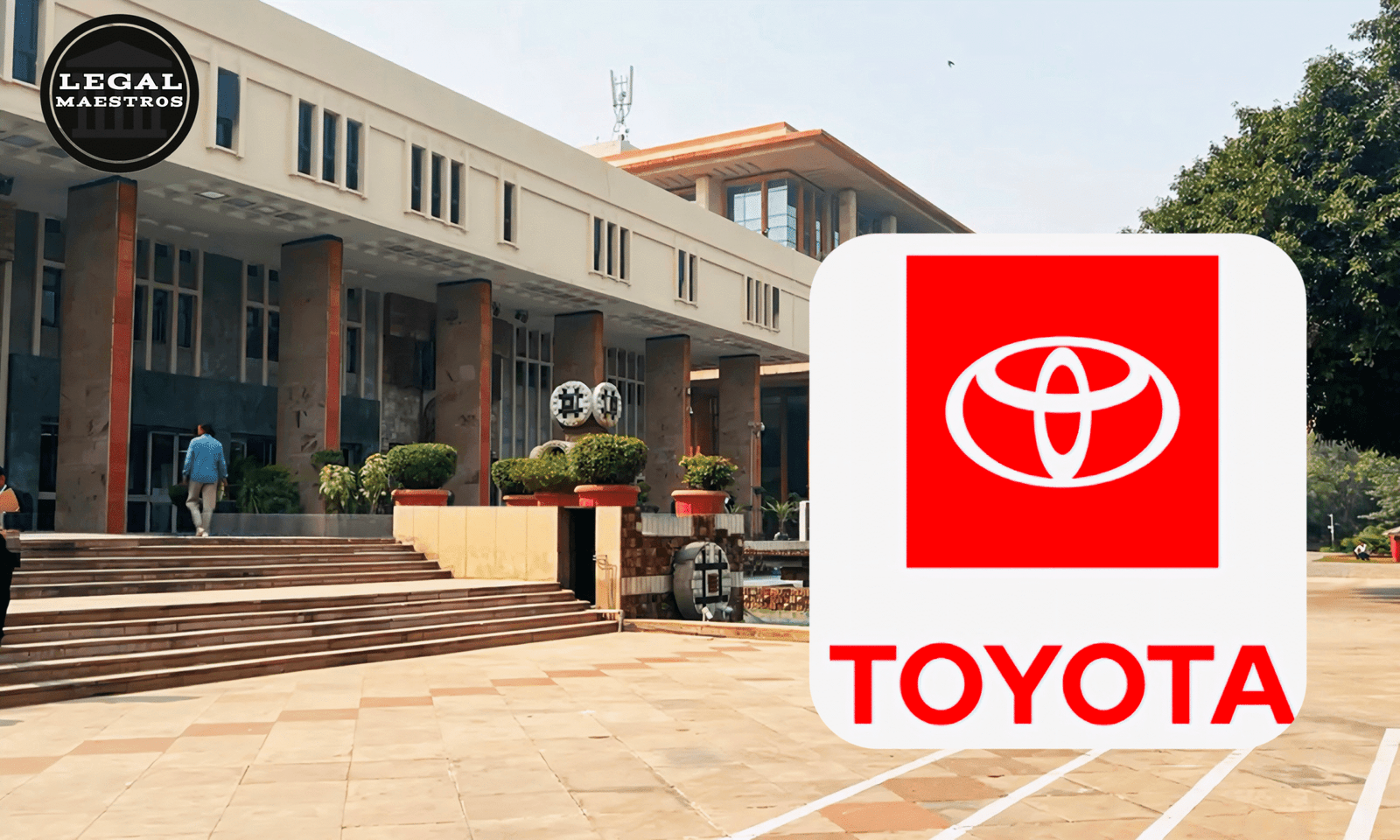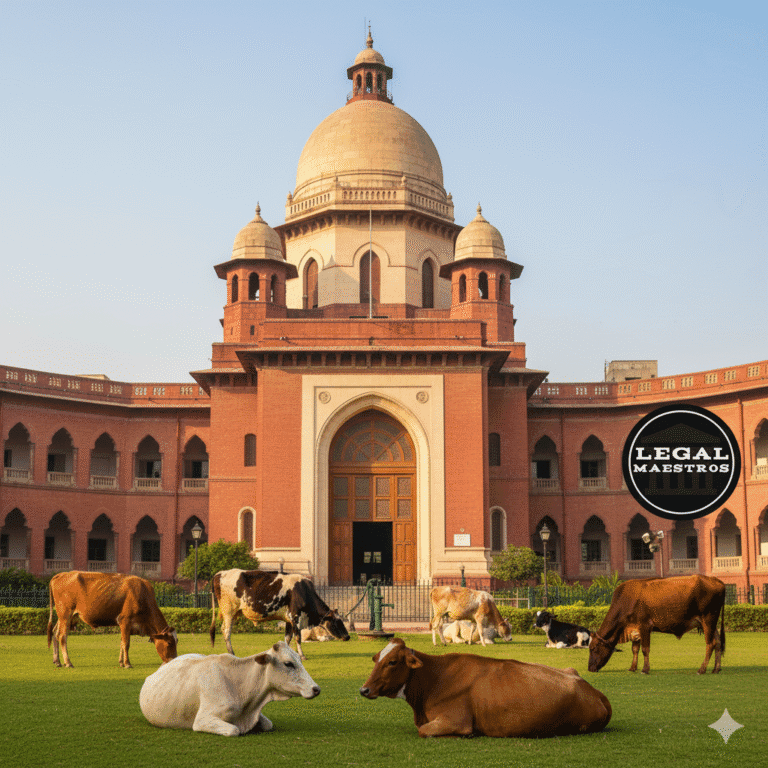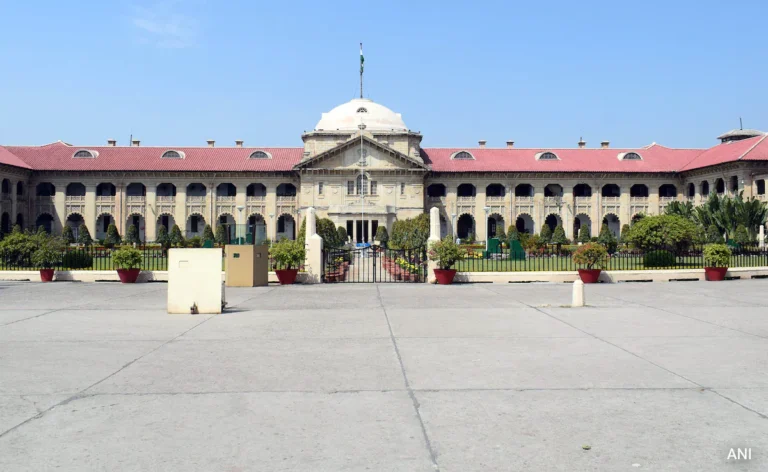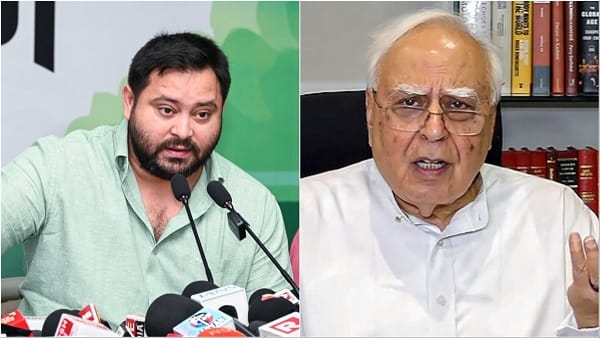
It was a major law case in the Delhi High Court where, in India, LMW Limited was sued by Kaushiki Kaisha Toyota Jidoshoki, a Japanese firm. The essence of the controversy was a patent of the “Fiber Bundle Concentrating Apparatus in Spinning Machine,” named IN2447593 (or IN759). Toyota Jidoshoki asserted that LMW Limited was unlawfully employing its patented technology in their spinning machines known as Spinpact. The case is one of the best examples when speaking about the provision of the vital points to employ with reference to the patent law the patent infringement, novelty of inventive steps. On July 1, 2025, the ruling was published.
Kabushiki Kaisha Toyota Jidoshokki: Toyota- the international innovative company
It is a company that came into existence in the year 1926 in Japan with the name Toyota Automatic Loom Works Ltd.The company at that time concentrated on automated looms. Through the years, the company has developed as a global leader as it designs, manufactures, and sells a broad spectrum of products, such as textile machines, handling equipment, and automobiles, as well as parts. The company has more than 77,000 workers across the globe and enjoys high financial capabilities allowing it to be one of the top actors in different sectors. Toyota Jidoshoki has more than 228 patents to its name in India; its subsidiary company is based in Bangalore, and the patents it holds include IN759 and an additional one, IN3948834 (IN883), which was not pursued in this particular case. The company also won numerous awards because of its technological development.
Explaining The Patented Technology – IN759
An invention called Patent IN759 with the formal name of Fiber Bundle Concentrating Apparatus in a Spinning Machine was filed on May 24, 2005 and granted on December 20, 2010. This patent refers to one of the important components of a spinning machine, which serves to collect fiber bundles once stretched.
For any queries or to publish an article or post or advertisement on our platform, do call at +91 6377460764 or email us at contact@legalmaestros.com.
The backlog of cotton fly (loose cotton fibers) on a particular page of the spinning machine: the gap between the lower nip roller and the suction part was the core issue IN759 tried to address. This cotton fly would build up the machine and reduce speed and productivity and would need to be manually cleaned a great deal.
The solution that IN759 came up with entails additional grooves on the bottom NIPP roller. These are grooves that are of a minimum depth of 0.04mm that ensure that the cotton fly does not get stuck in the gap. In the event that any cotton fly happens to go through the gap, then these grooves readily trap and pull it out and it does not accumulate. Consequently, the patented technology assists in the production of less fuzzy cotton yarn and does not require frequent cleaning of cotton yarn thereby saving extensive time and manual efforts.
Toyota Jidoshoki has a wide marketing and sales network around the world under which it sells yarn spinning machines based on the technology that the IN759 covers. They have been able to make huge sales all over the world and even in India using machines that have adapted to this patent.
Claims of the plaintiff: Infringement by LMW Limited
LMW Limited was charged by Toyota Jidoshokki over the infringement of its IN759 patent. It accused LMW of spinning the machine LMW Spinpact using patented technology, namely installing knurled rollers with grooves more than 0.04mm deep in them. In trying to confirm such an allegation, Toyota Jidoshoki subjected samples of the knurled rollers of LMW to analysis by Carl Zeiss India (Bangalore) Pvt. Ltd. Analysis done on 13th of March 2023 shows that the grooves on LMW rollers were measured to be 0.15mm, a figure that comes under what IN759 claims of grooves of 0.04mm or greater.
Senior counsel of Toyota Jidoshokki Mr. C.M Lall submitted that there was an obvious infringement of the patently developed technology by LMW Limited in their Spinpact machines. He mentioned that LMW never claimed that they were
Not applying the technology and they had also not offered any substitute technology to IN759, which is usually needed in non-infringement defense under the Delhi High Court Patents Rules 2022.
Attacking Patentability: The Clearing-the-way Principle
A major bone of contention was the principle of clearing the way. Toyota Jidoshoki claimed that in order to dispute the validity of a patent, the defendant must adduce powerful scientific evidence and, preferably, clear a path either through a pre-grant opposition, a post-grant opposition or a petition for revocation. Mr. This is what LMW failed to do at the beginning; their counter-claim to cancel was already filed long after their opening defence and even after the response from Toyota Jidoshokki answered last. To the plaintiff this implies that LMW was copying the patented process and not challenging it first.
Toyota Jidoshokki also opposed the patents of LMW, which argued that IN759 had no novelty or inventive step. They said that their earlier spinning machines did not use grooves on the lower nip rollers, applied after the priority date of the patent (May 28, 2004) to enhance their functionality.
Specifically about prior art (previous inventions or publications), Mr. Lall said that in the case where a patent is deemed as obvious, there must be a probable connection between the problem that was prevalent in the prior art and the solution in the obviousness of the patent in question. He claimed that it is not in the prior art that LMW had mentioned that specifically deals with solving the problem of cotton fly build-up through the use of grooves that are 0.04mm or deeper on the bottom nip roller. It was also to his mind that it is not permissible to mix-race several known inventions together in some complex manner to attack the novelty of the patent, whereas the mix-racing which performs this feat may also serve to prove the invention itself.
Defense by Defendant: Novelty, Obviousness and Prior Art
LMW Limited, which is an Indian company with a long history in business established in 1962 has refused the infringement of the patent firmly. It was contended that they were the owners of the technology which was employed by IN759 and they had already gone ahead and developed the same even prior to patenting by Toyota Jimoshi. LMW asserted that IN759 had no novelty and did not involve an inventive step because the technology was known publicly before the patent filing occurred through previous art and that grooves more than 0.04mm deep had been used already on bottom side nip rollers by Toyota Jidoshoki itself prior to the priority date of the IN759 patent.
Mr. Gaurav Pachnanda, the senior counsel appearing on behalf of LMW Limited, punched holes into the grounds of clearing the way by arguing that grant of a patent did not automatically mean validity of the patent. He said the plaintiff must establish infringement and likelihood of damage and a defendant must demonstrate only substantial, tenable and credible questions about the validity of a patent early in a case.
It was specifically statements about the apparent contradictory position taken by Toyota’s Jidoshoki about how its grooves in IN759 work, in suppressing or inducing turbulence, that were cited by LMW. They claim that these inconsistencies raise question marks about the technical solution alleged.
About the obviousness, LMW had reference to prior art document (WO02/084000 A1, abbreviated to E1) in one regard, stating that the use of grooves on nip rollers had been described in the document to eliminate fuzzing. They claimed that though the depth was not mentioned in E1, the fact that Toyota Jidoshokki defined grooves (as over 0.04 mm) instead of the alternative definition (as over 2 mm) would mean that the grooves of E1 would have a depth in that range. They therefore argued that the addition of a particular numerical depth of grooves which would have been clear to a technical professional was not an inventive step.
LMW also referred to a number of other prior art documents (US6327747B1, US 6272824 B1, CN1367282A, US 6425164 B2, GB696893A) that not only disclosed grooves of various depths on rollers but in some cases such grooves on drafting rollers. which LMW claims that could be used as nip rollers. According to them, the concept of addressing the problem of fuzzing with grooves going deeper than 0.04mm was not new and hence did not possess inventive steps.
Additionally, LMW claimed that IN759 was non-novel since the own company machines (Model RX240) of Toyota Jidoshokki already incorporated the bottom nip rollers with grooves more than 0.04mm prior to the priority date of IN759 patent (May 28, 2004). As evidence they named a press release by Toyota Jidoshokki dated October 15, 2002. LMW claimed that Toyota Jidoshokki lied that these rollers were initially plain to then replace them with the grooved ones.
The following is the key finding made by the court: Patent expiry.
After hearing between the two parties, the Delhi High Court pointed to an important detail: Patent IN759 expired on May 24, 2025.
According to the third section (Section 53) India Patents Act, the period of a patent cannot exceed twenty years from the date of patenting. After this term, the patent no longer takes effect and the technology thus patented becomes part of the public domain. This implies that twenty years later, the technology cannot be blocked from being used or commercialized by anybody.
The Court pointed out that the sentence of twenty years is there in the larger social and economic interest of society. It would be stating the obvious that granting an interim injunction after the expiry of the patent is useless (“futile”) and beyond the judicial mandate of the Patents Act. The Court had reasoned that it cannot grant security to an expired patent that has already gone into general jurisdiction, and even at that, the patent cannot be renewed under Indian law after this legal deadline.
Since the patent IN759 already expired on May 24, 2025, the Delhi High Court decided that an interim injunction applied as requested by Kabushiki Kaisha Toyota Jidoshoki would be ineffective and otherwise illegal. The patent has expired, and the technology may be used freely by anybody.
Thus, the injunction application was rejected and each of the parties was to pay his own costs. The case was to have a subsequent hearing in front of the Joint Registrar on July 20, 2025, to complete the paperwork and admission/denial of the documents.
It is worth remembering that this judgment is reflecting one of the major principles of patent law, namely that patent protection ends after a certain length of time and once that time is up, the underlying technology will enter the public domain to limit the monopoly on the patent holder without denying others access to the advancement.







